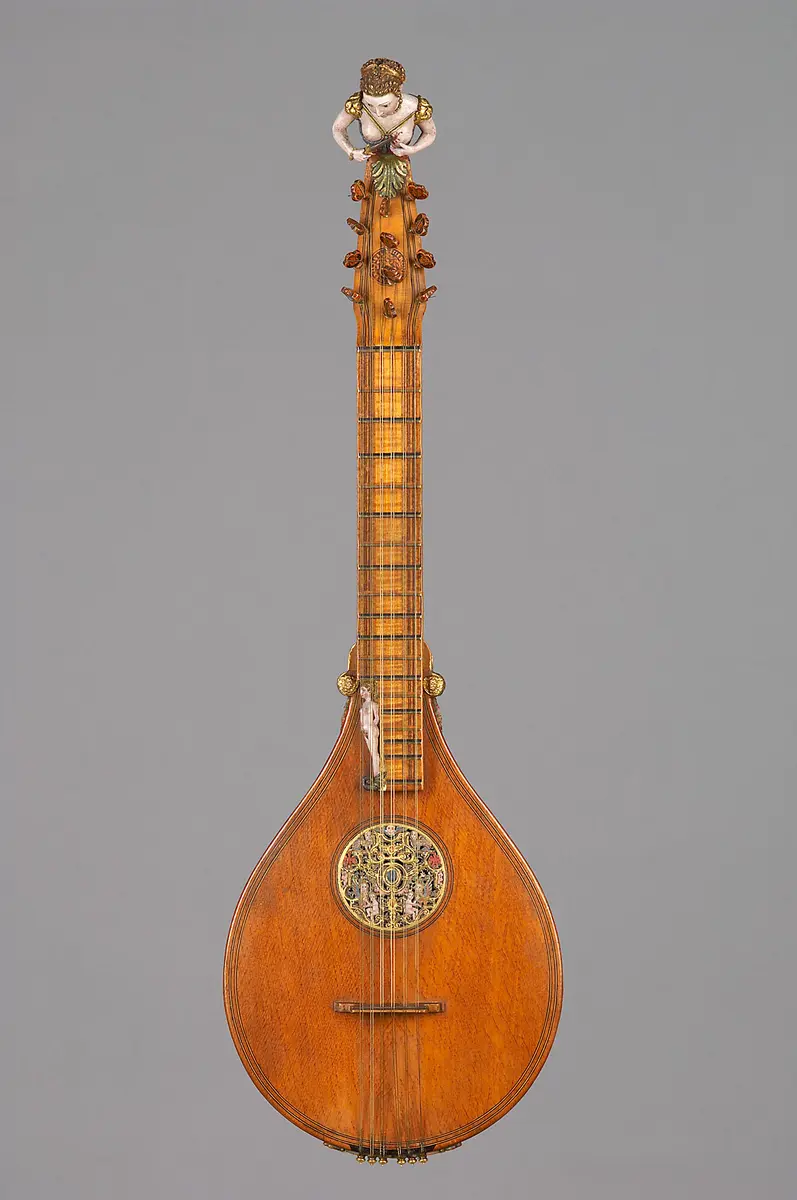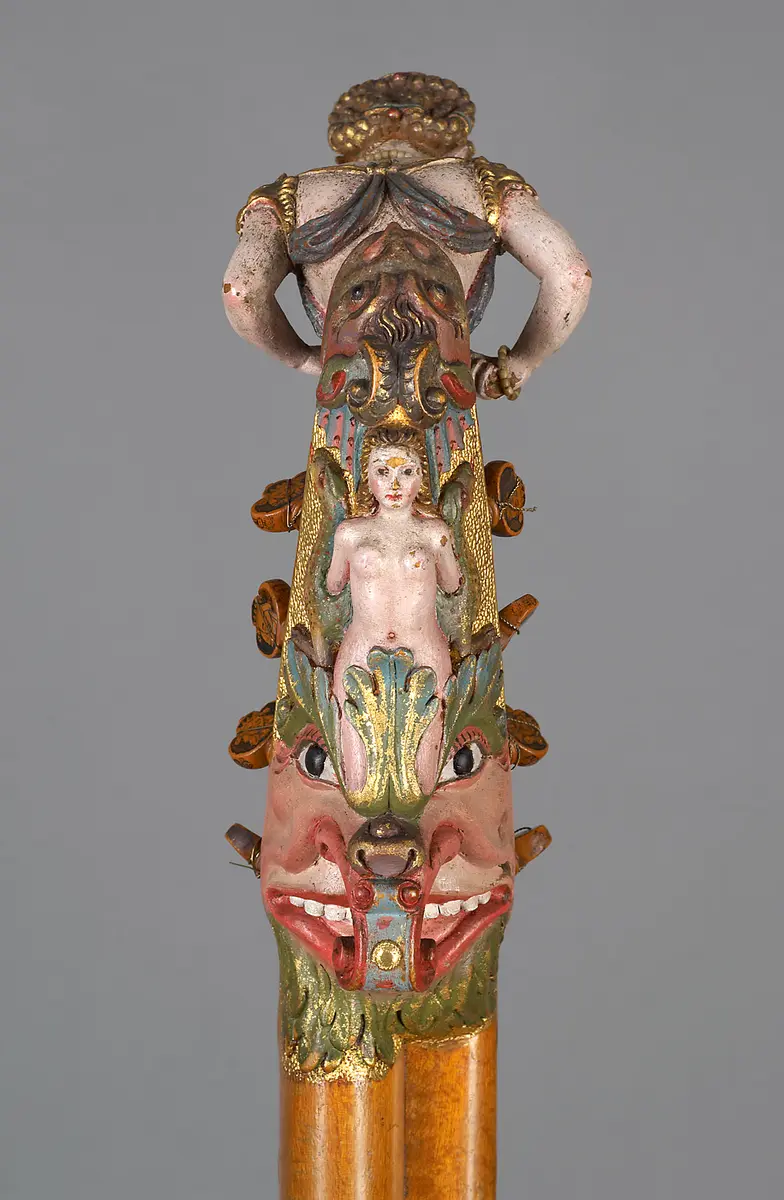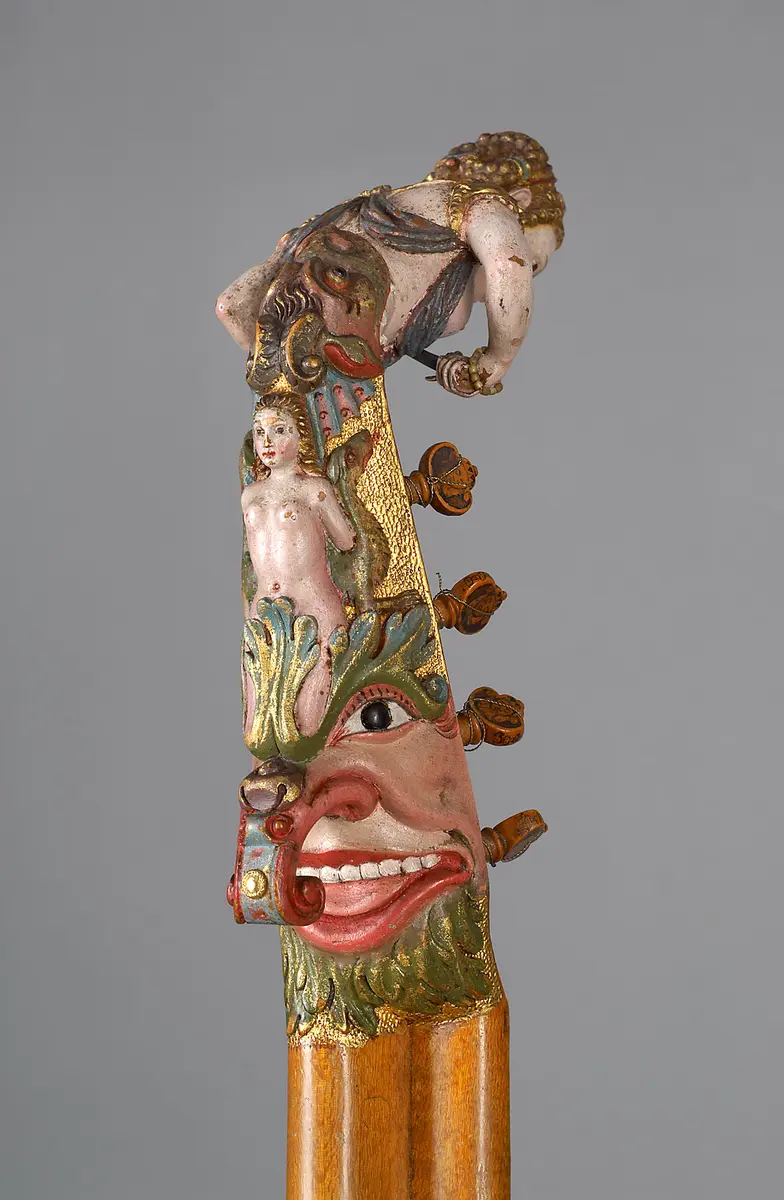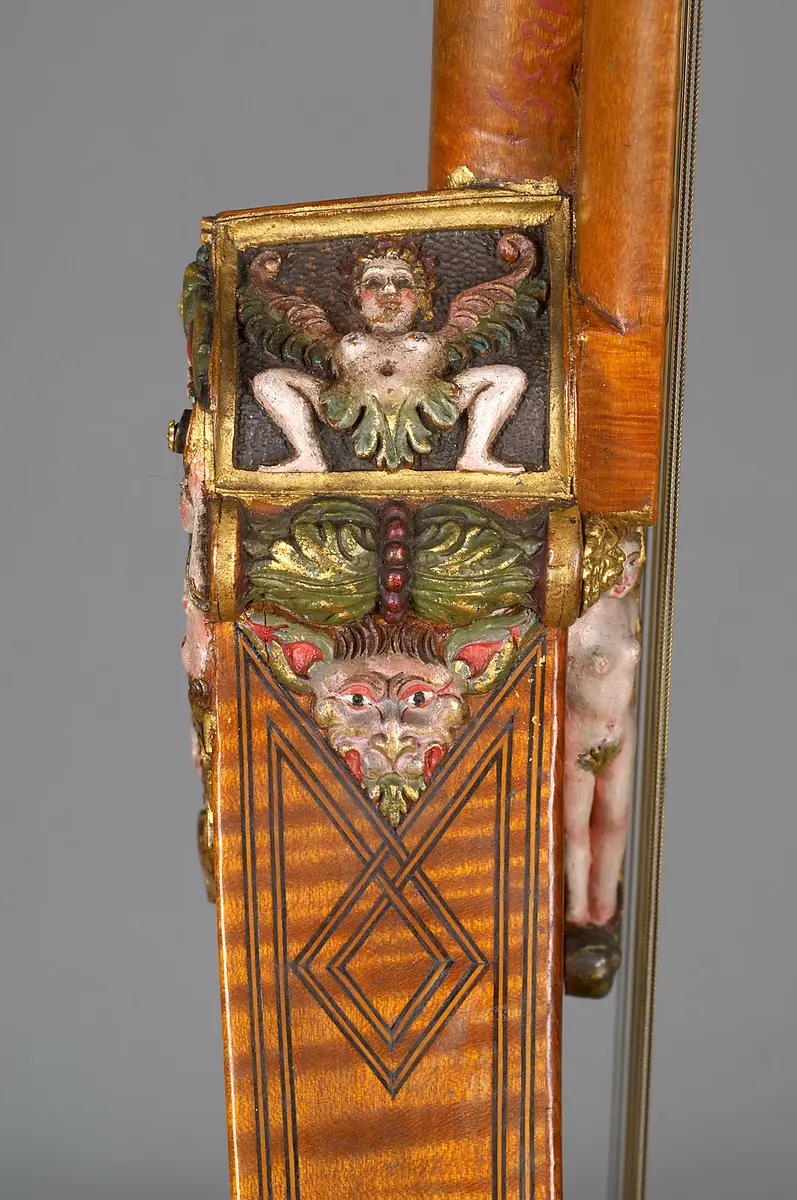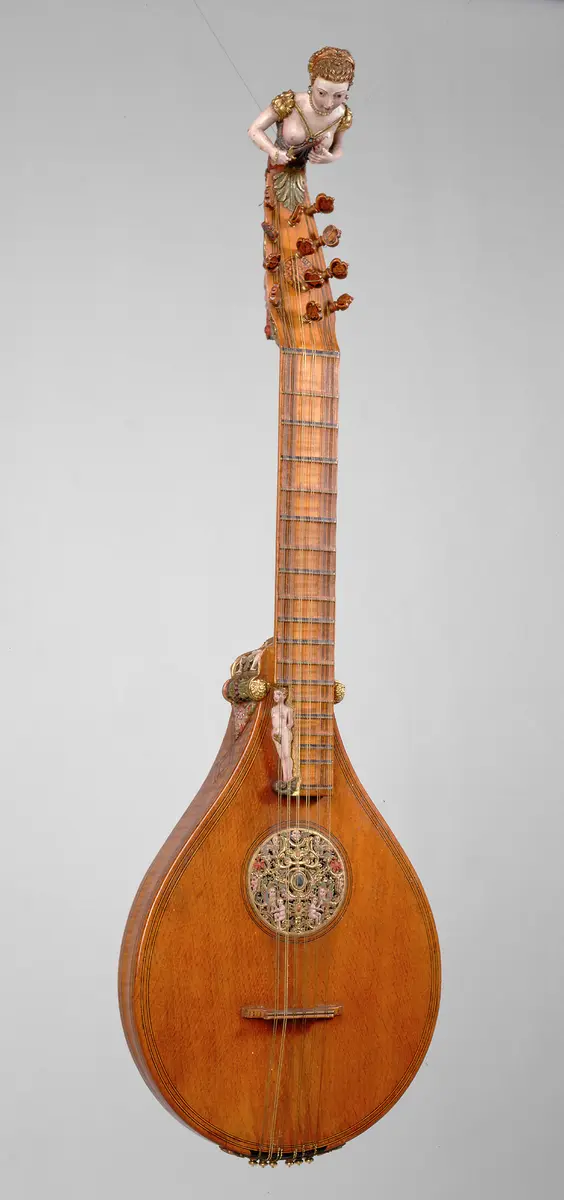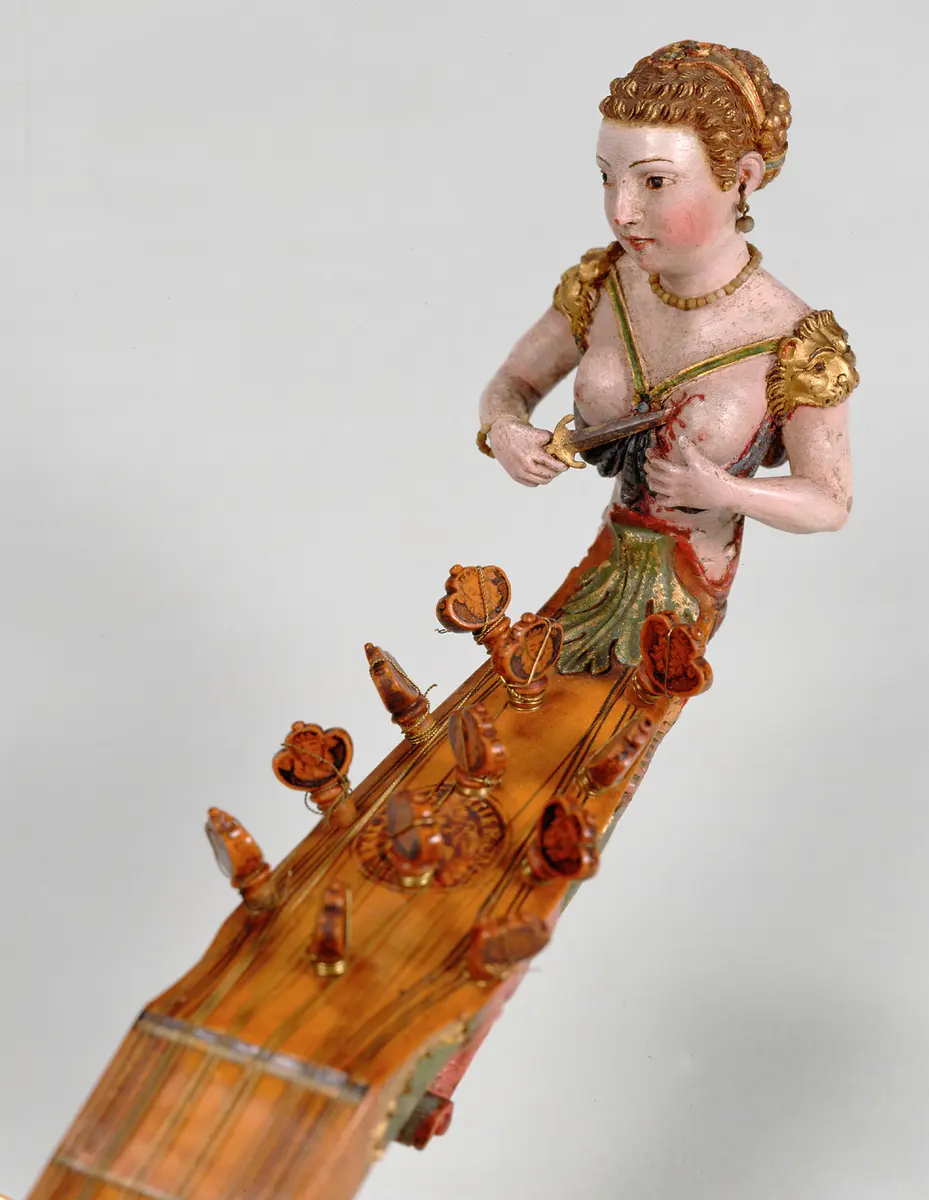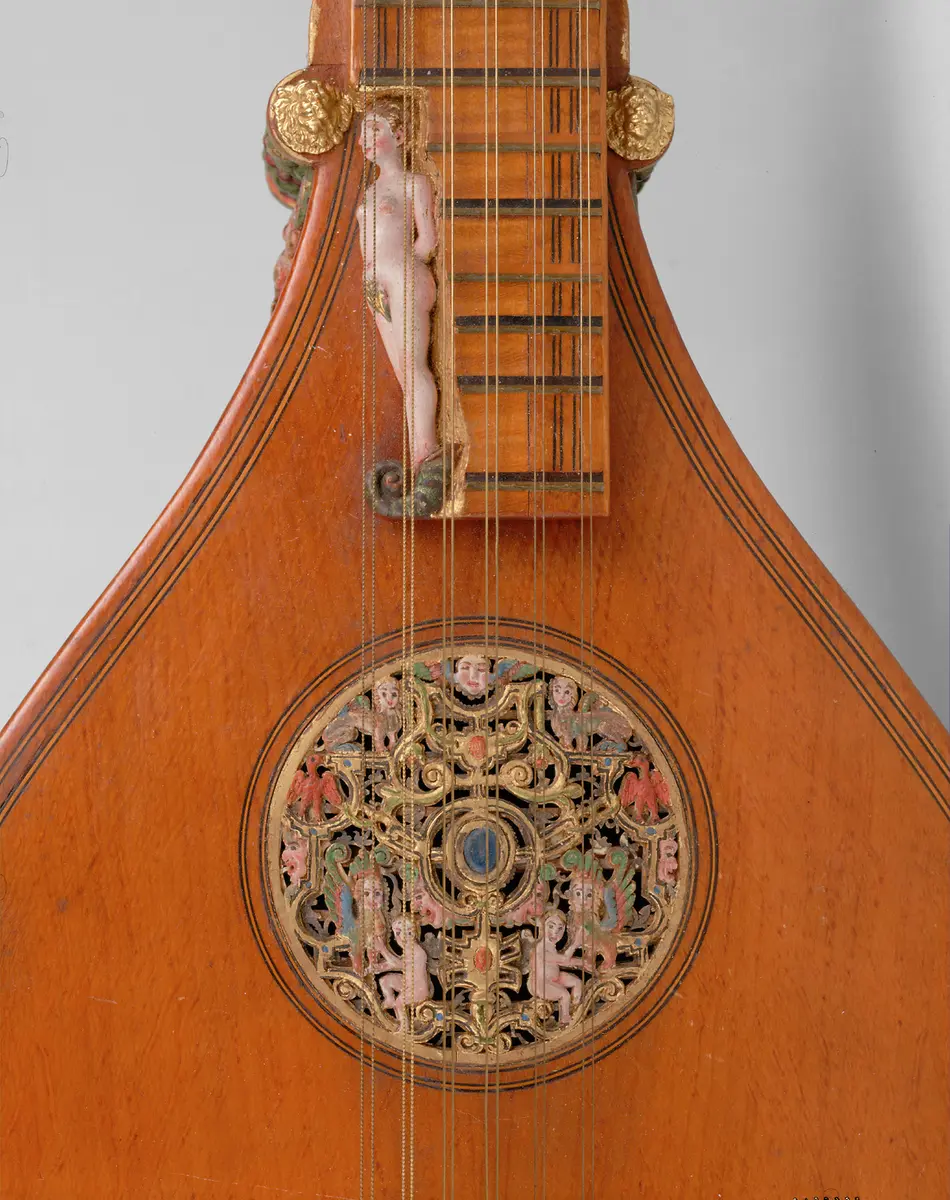Cittern
Die Cister von Girolamo de Virchi (ca. 1523 - nach 1574) stellt eines der prunkvollsten und am schönsten verzierten Instrumente der gesamten Musikgeschichte dar. Sie war Bestandteil der berühmten Kunst- und Wunderkammer Erzherzog Ferdinands auf Schloss Ambras bei Innsbruck. Außer den klangbestimmenden Teilen, die unverziert sind, wurde jedes Bauelement künstlerisch gestaltet. Am Halsansatz findet sich ein Hinweis auf den Besitzer: das Wappen Ferdinands, über dem zwei weibliche Halbfiguren den Erzherzogshut halten. Überaus kunstvolle Arbeit zeigt die Rosette mit ihren teilweise vergoldeten und farbig gefassten Schnitzereien. Den optischen Höhepunkt bildet die Bekrönung der Wirbelplatte. Ein Fratzengesicht geht in ein drachenartiges Ungeheuer über. Dessen Rachen entsteigt eine weibliche Figur, in der unschwer Lucretia zu erkennen ist. Bekleidung und Kopfschmuck der Figur entsprechen denjenigen einer adeligen Dame der Renaissancezeit; sogar die Ohrgehänge sind en miniature aus echten Perlen gefertigt. (rh)
Literatur:Julius Schlosser: Die Sammlung alter Musikinstrumente. Beschreibendes Verzeichnis, Wien 1920.Rudolf Hopfner: Meisterwerke der Sammlung alter Musikinstrumente, Wien 2004.
Manufacturer:
Girolamo de Virchis (ca. 1523 Brescia - nach 1574)
Time:
1574
Object Name:
Cittern
Culture:
Italy, Brescia
Dimensions:
740 mm x 230 mm x 60 mm
Copyright:
Kunsthistorisches Museum Wien, Sammlung alter Musikinstrumente
Invs.:
Sammlung alter Musikinstrumente, 56
